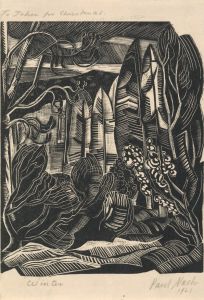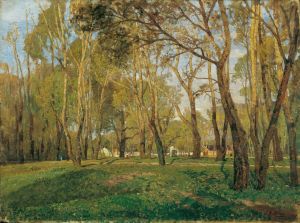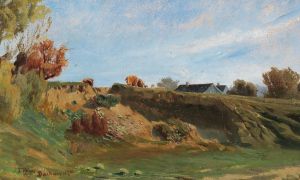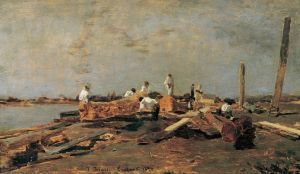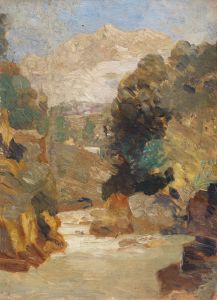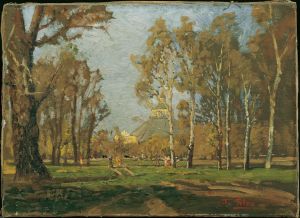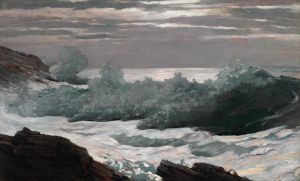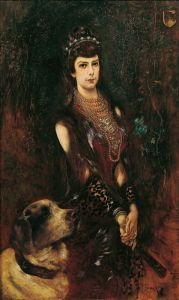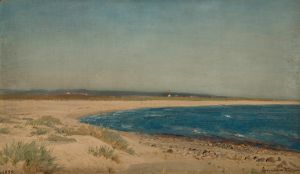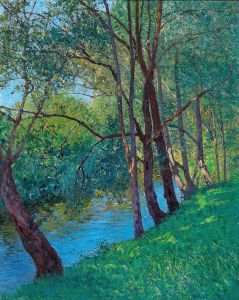
Donaulandschaft
A hand-painted replica of Tina Blau’s masterpiece Donaulandschaft, meticulously crafted by professional artists to capture the true essence of the original. Each piece is created with museum-quality canvas and rare mineral pigments, carefully painted by experienced artists with delicate brushstrokes and rich, layered colors to perfectly recreate the texture of the original artwork. Unlike machine-printed reproductions, this hand-painted version brings the painting to life, infused with the artist’s emotions and skill in every stroke. Whether for personal collection or home decoration, it instantly elevates the artistic atmosphere of any space.
Tina Blau, an Austrian landscape painter, created the painting "Donaulandschaft" (Danube Landscape) in 1870. Blau was a prominent figure in the Austrian art scene and one of the few successful female artists of her time. She was born on November 15, 1845, in Vienna, Austria, and studied under various artists, including August Schaeffer and Wilhelm Lindenschmit.
"Donaulandschaft" is a notable example of Blau's work, showcasing her skill in capturing the natural beauty of the Austrian landscape. The painting depicts a serene view of the Danube River, a significant geographical and cultural landmark in Central Europe. The river flows through several countries, including Germany, Austria, Slovakia, Hungary, and Romania, before emptying into the Black Sea.
Blau's painting style is characterized by its detailed and realistic portrayal of nature, influenced by the plein air (outdoor) painting technique. This approach allowed her to capture the changing light and atmosphere of the landscape, giving her work a sense of immediacy and vitality. In "Donaulandschaft," Blau's use of light and color effectively conveys the tranquil and picturesque quality of the river scene.
The painting features a broad view of the Danube, with the river winding through the landscape. The foreground includes lush greenery and trees, while the background reveals distant hills and a clear sky. Blau's attention to detail is evident in the meticulous rendering of the foliage and the reflections on the water's surface. The composition is balanced and harmonious, drawing the viewer's eye along the river's path and inviting them to appreciate the natural beauty of the scene.
Blau's work was well-received during her lifetime, and she exhibited widely in Austria and Germany. She was associated with the Munich Secession, a group of artists who sought to break away from traditional academic art and explore new artistic styles and techniques. Blau's success as a female artist in a male-dominated field was significant, and she served as a role model for other women pursuing careers in the arts.
In addition to her painting career, Blau was also an influential teacher. She taught at the Vienna Women's Academy, where she encouraged and mentored young female artists. Her contributions to the art world extended beyond her own work, as she played a crucial role in advancing the status of women in the arts.
"Donaulandschaft" remains an important example of Tina Blau's artistic legacy. The painting is held in high regard for its technical excellence and its ability to capture the essence of the Austrian landscape. Blau's work continues to be celebrated for its beauty and its contribution to the development of landscape painting in the 19th century.





